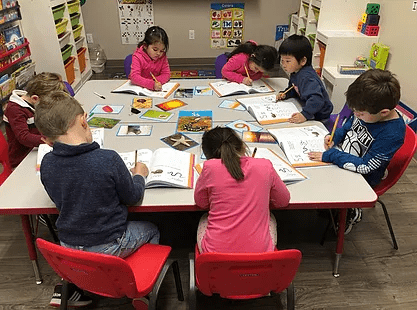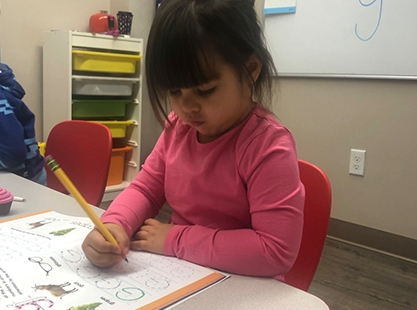Math and English
Singapore Math (Elementary School)
In 1982, the Singaporean education system went through a significant change, resulting in their students being the highest ranking in the world in mathematics and science, today. According to the Trends in International Mathematics and Science Study (TIMSS), Singapore scores first in math.
Learn more about the TIMSS study here
At Imagymnasium, we are moving beyond traditional approaches to learn mathematics, maximizing your student’s academic potential, and increase their engagement and love for learning. This is why we are using the teaching methods of Singapore to help your child grow.

Singapore math is based on three crucial steps. The first is concrete methods, where students are engaged in hands-on learning. Then, they move to pictorial methods, in order to visualize the math they experience. Lastly, they quantify their experience, by using numbers and other mathematical representations.
At Imagymnasium, we are giving students the tools they need to succeed in their futures. Our math program is based on Singapore methods. They’ll get help to overcome the problems that they face in math. Newfound skills in math will develop self-confidence, something crucial to their daily lives.

English
You’ve heard the phrase before: children are like sponges. They’re constantly listening and absorbing the world around them. One thing they’re able to learn with ease is language. Therefore, it’s the perfect time for your child to learn English. When learning English, they learn more than just the language. They develop their creativity, developmental, and social skills.
English is not only vital for English speakers but non-English speakers as well. It will empower them to become active members in the global conversation. At Imagymnasium, your child’s English learning environment will be fun and entertaining. In our low-pressure environment, they will learn through play, songs, and activities.
Before their program begins, your child will be assessed on their reading and writing. This will place them on a level in which they will learn on that level, and will be later assessed to see if they will move to the next level.

